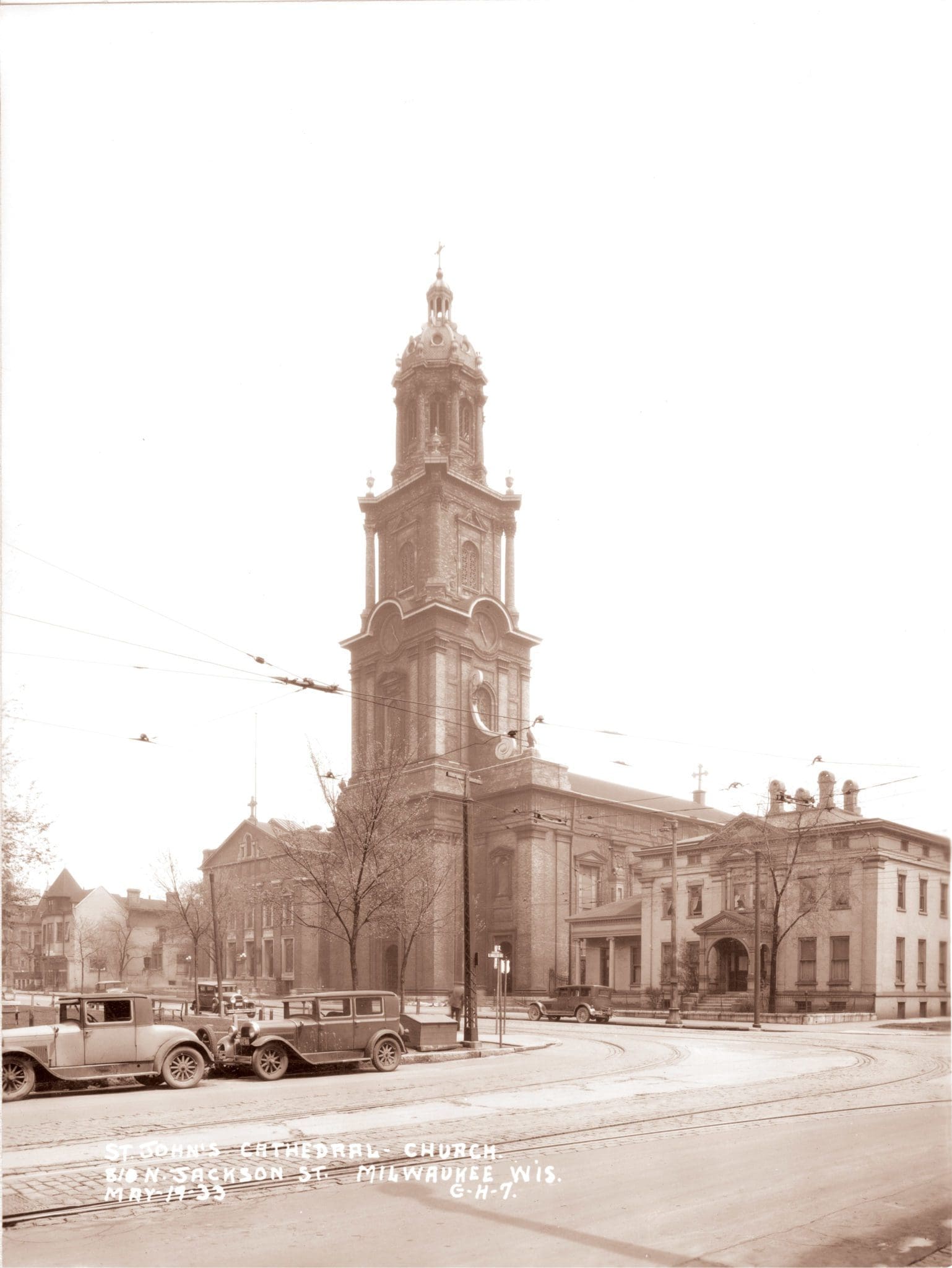
MADELINE ZUKOWSKI
CATHOLIC HERALD STAFF
With the city of Milwaukee a place of violence and poverty during the Great Depression, many turned to their Catholic faith for a sense of community and comfort.
The Mother Church of the Archdiocese of Milwaukee, the Cathedral of St. John the Evangelist, stood as the guiding force for those in the city of Milwaukee. But even that structure would come tumbling down, echoing the turmoil surrounding the city at that point in history.
In the early morning hours of Jan. 29, 1935, two Cathedral Usher Society members were walking between the Cathedral and its school when they noticed flames engulfing the sacristy. They called the police, who then called in numerous fire departments for help. The numbers of personnel and equipment used to fight the fire was so large, it was claimed to be one of the biggest firefighting efforts in the history of the city, according to the history of the Cathedral published at its centennial celebration.
Despite the personnel’s best efforts, the fire soon became too much, and the fire fighters focused on containing the fire to just the Cathedral building. The ceiling above the altar collapsed, as well as the floor of the sanctuary, making it impossible to save the Blessed Sacrament. Other large sections of the roof collapsed, sparks showered over the clergy quarters, and the auditorium and some of the school was damaged. All that remained was the exterior of the tower that pierced the sky, and the four walls of the church. The rest of $300,000 building was in ruins.
“For many, it was the church wherein their grandfathers and fathers were baptized, where they themselves were absolved from sin, received Holy Communion for the first time, became soldiers of Christ in Confirmation, plighted their troth in holy Matrimony,” stated the centennial booklet of the Cathedral.
Bishop John Martin Henni oversaw the building of the Cathedral of St. John the Evangelist, which was fully completed in the 1850s. His statement that it “would stand for 100 years” was just about accurate. After his death, he was buried in the Cathedral, and his tomb escaped the fire with no damage.
While the origin of the fire was never discovered, Archbishop Samuel Stritch wished to restore the Cathedral “in a worthy but not extravagant manner.” However, with the Great Depression in full swing, he decided to postpone any renovations. The responsibility to restore the Cathedral fell to Archbishop Moses Kiley, who in 1941 announced a drive to raise funds so the Cathedral’s renovations would be finished in time for its centennial celebration in 1943. A total of $500,000 was raised by the spring of 1942.
The first public service in the newly renovated Cathedral was the midnight Christmas Eve Mass celebrated by Archbishop Kiley in 1942. The restoration was fully completed by Easter of 1943.
Today, the Cathedral of St. John the Evangelist still stands as the archdiocese’s Mother Church. In addition to Sunday Mass, people from around the archdiocese gather at that Church to witness significant events in our Church’s history, all while remembering its past.
